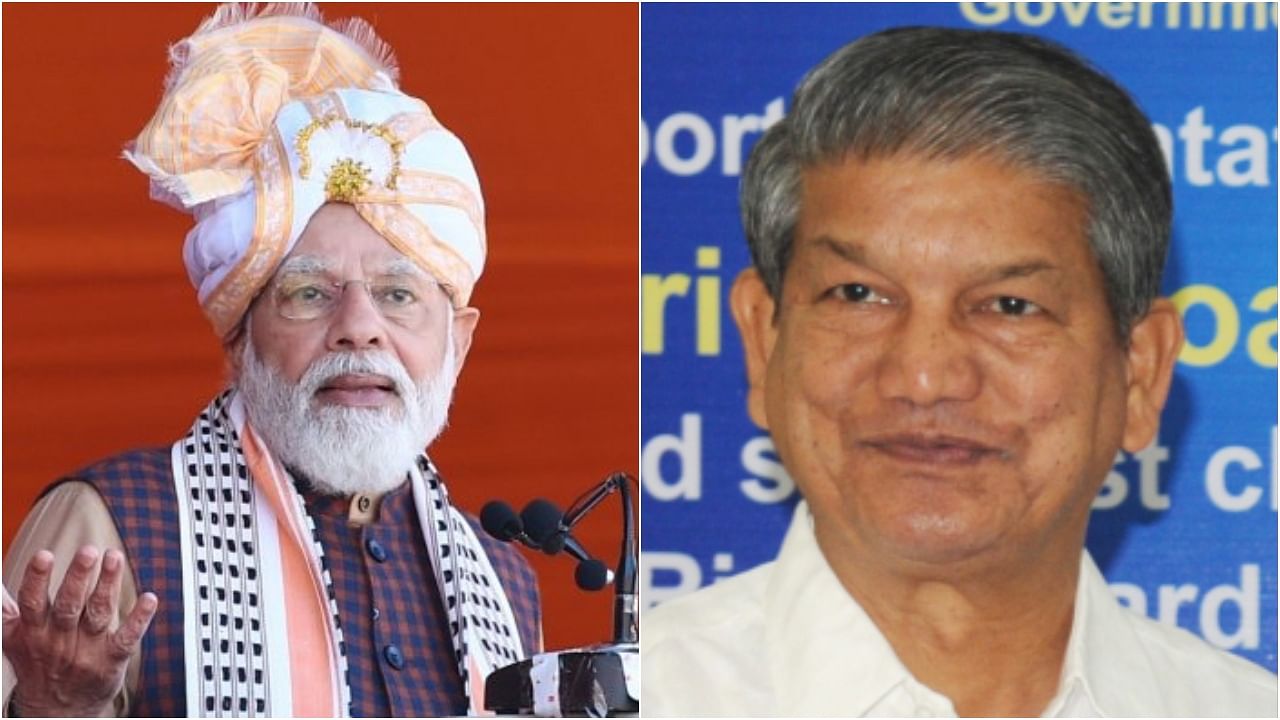
Uttarakhand has assumed significant political importance for both the principal political rivals in the state, the Bharatiya Janata Party (BJP) and the Congress. The BJP is banking on the electorate to give it an unprecedented second successive victory in the state, which would help vindicate its development and nationalism narrative across the country. The Congress is hopeful winning Uttarakhand would help its struggle for survival.
The BJP's soft religious push, in a way, emanates from Kedarnath, Badrinath and the two other Hindu shrines in the state. For the Congress, its ability to make the Narendra Modi factor and the BJP's development narrative secondary to the state's local issues in the upcoming polls could help decide its poll strategies in other states.
'Uttarakhandiyat'
In line with this approach, the face of the state Congress, former chief minister Harish Rawat, has coined the word "Uttarkhandiyat", and the party is going all out to make it an election focussed on local issues. As defined by Harish Rawat, "Uttarakhandiyat" means mandua (a cereal grown in the hills), ganna (sugarcane), and shilp (the state's art, culture and cottage industry), and these are prerequisites for the state's economic growth.
Other local issues that the Congress has highlighted are the creation of districts such as Didihat, Yamunotri, Kotdwar and Ranikhet, better infrastructure development in the new summer capital of Gairsain and scholarships for students. "Our main issues are unemployment, inflation, corruption, women's safety and poor condition of the farmers. The state saw three chief ministers in a short span of ten months, but there was no development in the last five years of the BJP government," said Mathura Dutt Joshi, general secretary (organisation) of the state unit of the Congress.
The immediate challenge for the Congress in Uttarakhand is to rein in factionalism in its state unit. Party leaders have recognised this is a do-or-die battle for the Congress and agreed in principle to rise above factionalism to distribute party tickets only to winnable candidates.
BJP's troubles
On the contrary, the ruling BJP has reasons to bank on the popularity of Prime Minister Modi for its success. Modi has maintained a close link with the hill state. Before the Election Commission announced the poll dates, Modi had already visited different parts of Uttarakhand - Kedarnath on November 5, Dehradun on December 3 and Haldwani on December 30. In his public meetings, the PM emphasised that this decade belonged to Uttarakhand given the speed of its infrastructure development, such as better rail and road connectivity in the hills. Modi reminded people of important projects like the all-weather road, Rishikesh-Karnprayag railway line and Kedarnath reconstruction.
The last five years have not been an easy ride for the BJP in power. The party had to change three chief ministers in a short span of four months. Uttarakhand Char Dham Devasthanam Management Act, which came into existence during the tenure of chief minister Trivendra Singh Rawat, was recently withdrawn by the current chief minister, Pushkar Singh Dhami.
The priests of the shrines had staged protests against the Devasthanam Board for the last two years. The BJP accepted their demands and withdrew the law to control 51 temples across the state, including Kedarnath and Badrinath.
The BJP's other challenge is to limit the political damage it faced in the wake of the farmers' agitation in the Terai belt, particularly the Udham Singh Nagar area. Udham Singh Nagar is politically significant as it sends nine MLAs to the 70-member Legislative Assembly of the state. Chief Minister Dhami represents the Khatima seat of the same district.
In the meantime, former minister Yashpal Arya and his MLA son Sanjeev Arya, popular among the Scheduled Caste voters in the state, particularly in the Kumaon region, have deserted the BJP and joined the Congress. Yashpal Arya had joined the BJP ahead of the 2017 assembly polls.
The advantage for the BJP in this hill state is its good organisational support base. Nearly 5,000 workers are conducting door-to-door campaigns every day in different parts of the state to reach out to voters, especially beneficiaries. The party has strengthened its social media cells armed with data, particularly the beneficiaries of the Centre and state government welfare schemes.
The source of trouble for both the Congress and the BJP is the Aam Aadmi Party's (AAP's) entry into state politics. The AAP has fielded its candidates on all 70 seats. But it would be too early to predict its fate in the upcoming polls. The AAP is expanding its organisational base and receiving a good response in some of the pockets in the state.
(Namita Singh is a journalist based in Dehradun)
Disclaimer: The views expressed above are the author's own. They do not necessarily reflect the views of DH.
Deccan Herald is on WhatsApp Channels| Join now for Breaking News & Editor's Picks